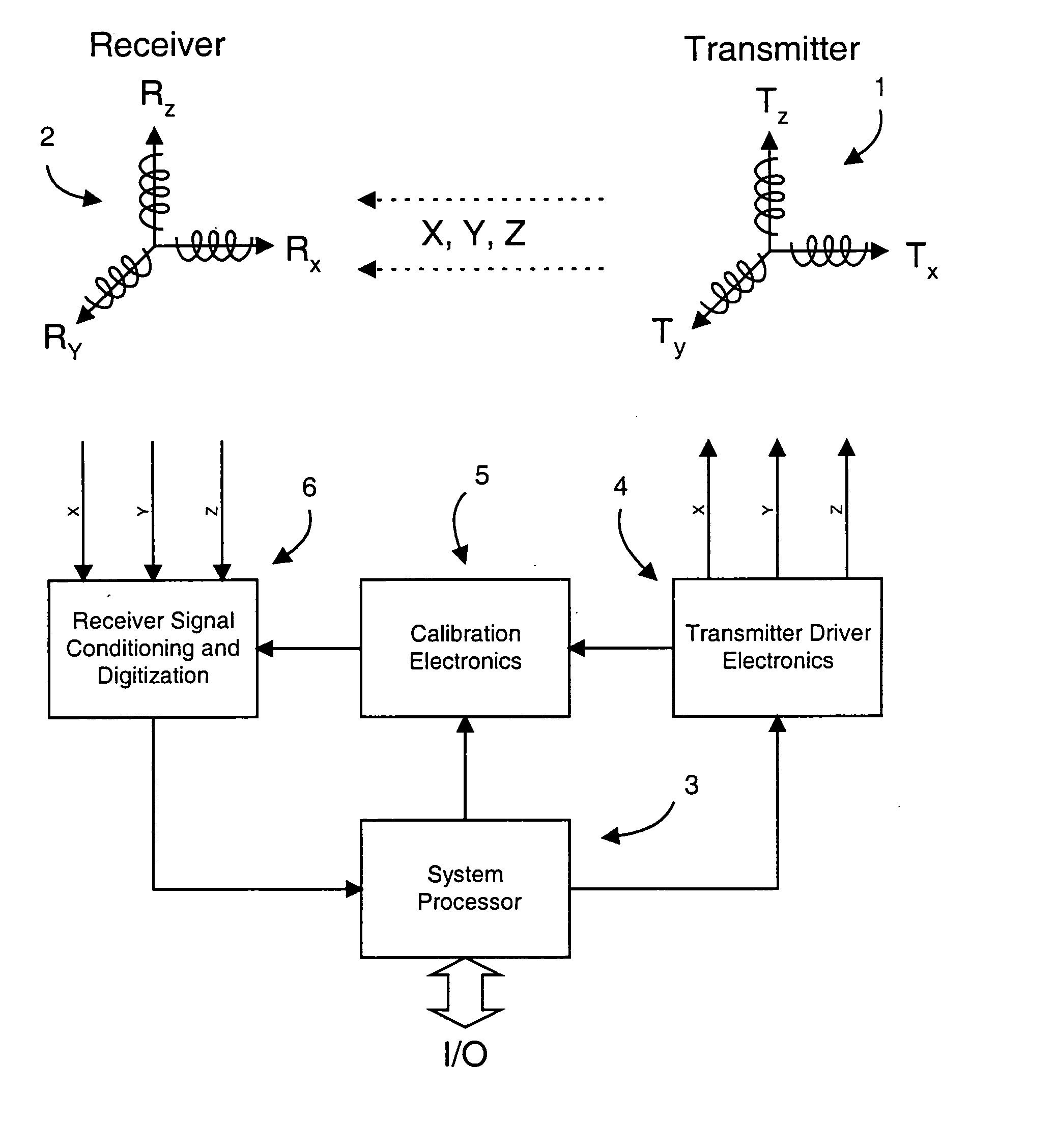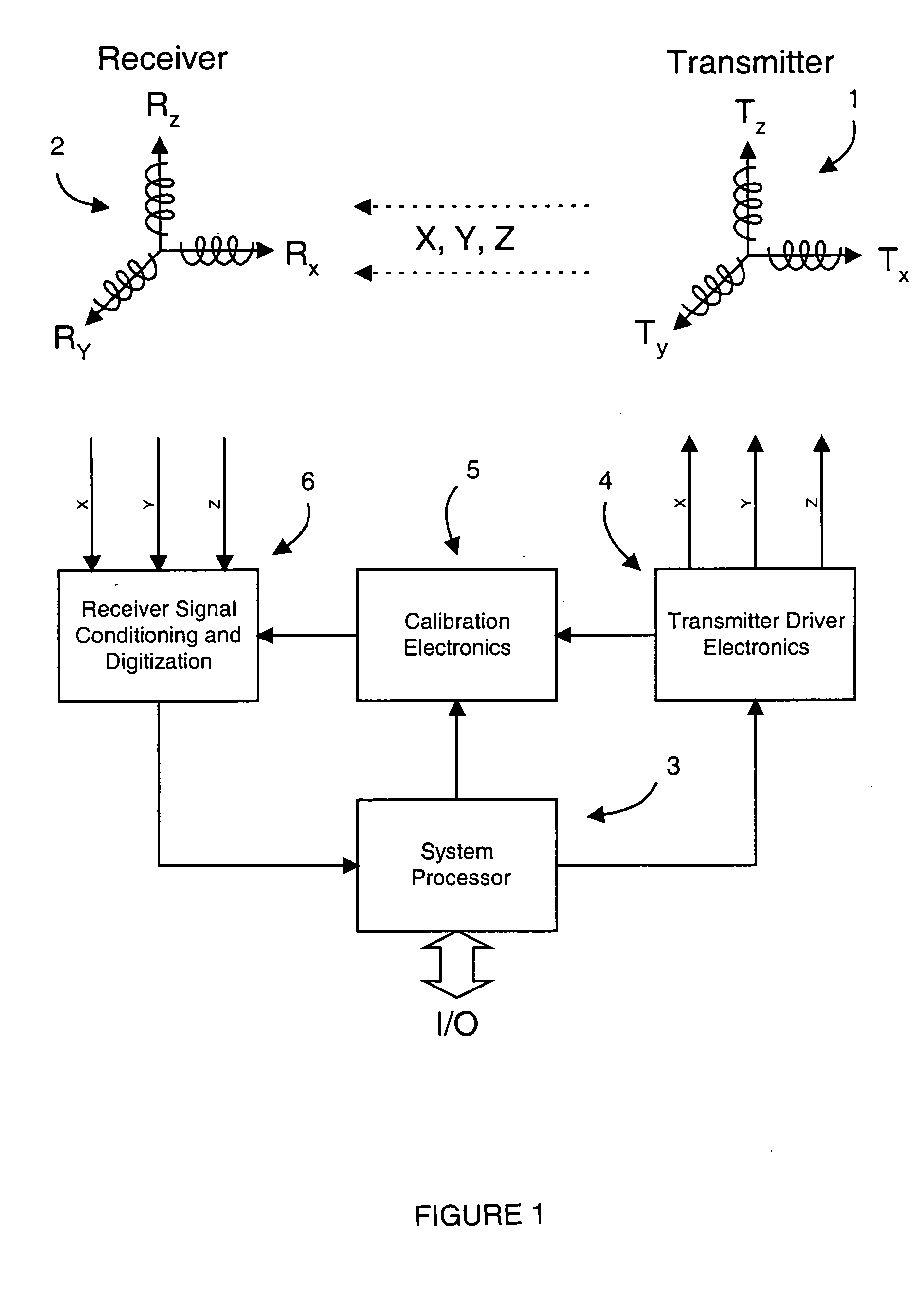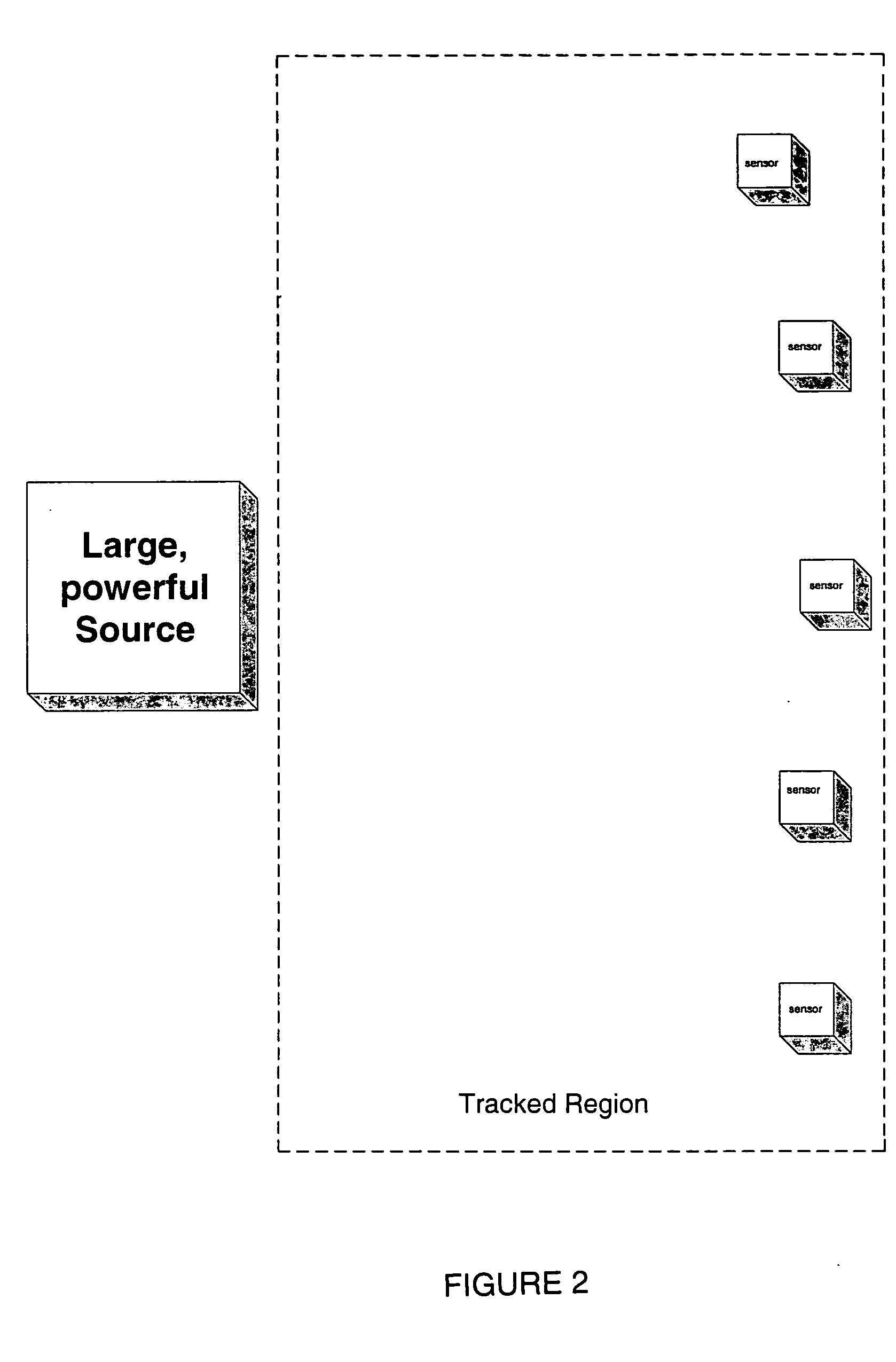AC magnetic tracking system with non-coherency between sources and sensors
a tracking system and non-coherent technology, applied in the direction of electrical/magnetic measuring arrangements, instruments, point-to-point measurements, etc., can solve the problems of error signals caused by magnetic signals, causing responses that distort data, and always difficult to achiev
- Summary
- Abstract
- Description
- Claims
- Application Information
AI Technical Summary
Benefits of technology
Problems solved by technology
Method used
Image
Examples
Embodiment Construction
[0020] If one desires a remote “sensor” to track, it really does not matter whether the source or sensor is tracked because the P&O calculation is the relative position and orientation between source and sensor. If adequate sensitivity and low noise performance can be achieved with the sensor and a means can be found to determine the source frequency / frequency set and become synchronized with this external source of orthogonal fields, then the source can be remotely disposed as a “pseudo-sensor.” Furthermore, once this is accomplished and there is no constraint placed on the source signals except that they create signals from a frequency population consistent with the system, there can be sources both wireless and wired being tracked as pseudo-sensors. Applicable wireless configurations are disclosed in co-pending U.S. Provisional Patent Application Ser. No. 60 / 578,128, the entire content of which is incorporated herein by reference.
[0021] The reciprocity of the tracking relationsh...
PUM
 Login to View More
Login to View More Abstract
Description
Claims
Application Information
 Login to View More
Login to View More - R&D
- Intellectual Property
- Life Sciences
- Materials
- Tech Scout
- Unparalleled Data Quality
- Higher Quality Content
- 60% Fewer Hallucinations
Browse by: Latest US Patents, China's latest patents, Technical Efficacy Thesaurus, Application Domain, Technology Topic, Popular Technical Reports.
© 2025 PatSnap. All rights reserved.Legal|Privacy policy|Modern Slavery Act Transparency Statement|Sitemap|About US| Contact US: help@patsnap.com



